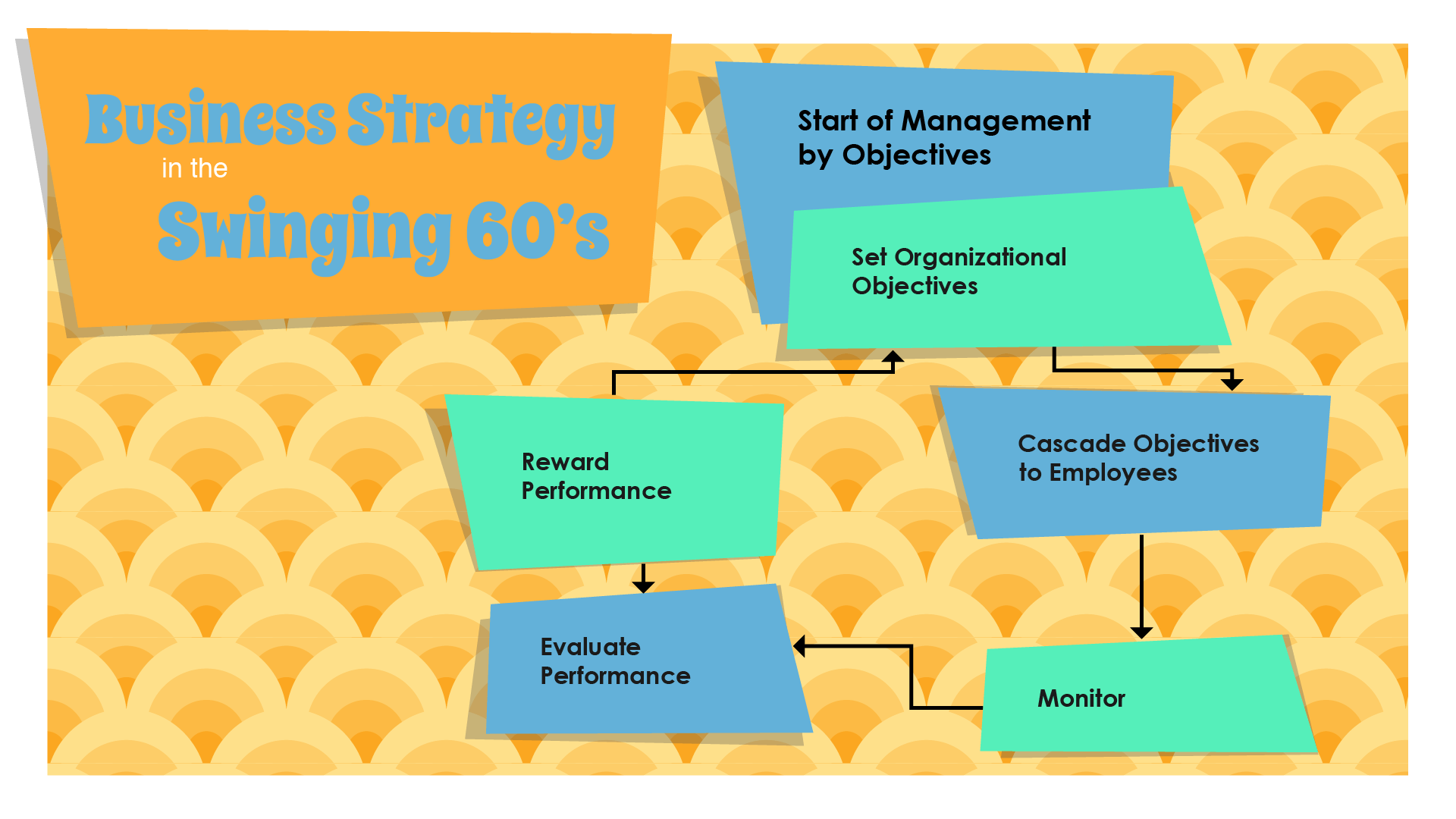Strategic Fashion Through the Decades, The Swinging Sixties
The 1960’s
Before we turn our attention to the future of business strategy, I want to start by looking back to the past, starting with the swinging sixties: Elvis Presley, landing on the moon, the Cultural Revolution. The first application of an industrial robot was even introduced in 1961, but in many workplaces the vast majority of people were still paid to do, and not to think.
The Father of Management
I still refer to my copy of The Essential Drucker by Peter Drucker. It is a great read if you like management books and need the occasional classic management quote for a presentation. Drucker is often referred to as the father of modern management, and in his sixth book published in 1954, The Practice of Management, he created a new management model: “Management by Objectives” now commonly known as MBO.
Management by Objectives
The model follows a clear 5-step process:
1 – Set Organizational Objectives
2 – Cascade Objectives to Employees
3 – Monitor
4 – Evaluate Performance
5 – Reward Performance
MBO goals are expected to be “SMART”, that is: specific, measurable, achievable, realistic and bound by time. I just want to make this point, the concept of MBO is over 50 years old. To put it into perspective, the hot tech of the day was from DEC (Digital Equipment Corporation) with their PD8 minicomputer (12-bit, speedy!). This philosophy was pretty radical thinking at the sunset of the industrial age. It’s fair to say that fostering acceptance of MBO as a management practice in the 1960’s would have been challenging.
Learning from MBO
Clearly management thinking has evolved, albeit slowly, since the 60’s. Forgive me if I sound like a management dinosaur of the industrial age, but as I consider the work we are doing at StrategyBlocks the MBO model is, in many respects, still surprisingly accurate.
The concept of a ‘strategy block’ describes a specific directed strategic activity often described as a key result area. It can be used to describe both high-level activity (vision & mission) and how this is cascaded (decomposed) to lower level task delivery blocks. They are bound by time and objective output is measurable. Outcomes, in the form of quantified metrics, are linked to objectives and provide a method to monitor and therefore evaluate performance in the context of both qualitative (output delivery) and quantitative (outcome achievement) measures. Both these variables are required to accurately reward performance.
What MBO doesn’t consider, is the human aspects of modern business strategy management in the information age, and this I will discuss as we move through the decades. Next month I will be talking about where the groovy 70’s took business strategy.




Leave A Comment